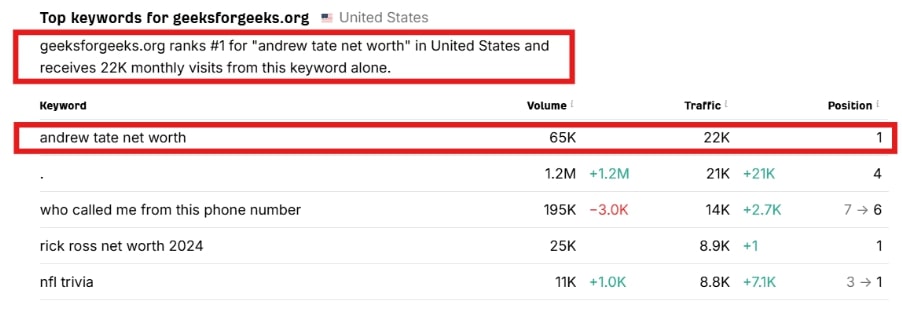Hey SEO folks, have you heard about what happened to GeeksforGeeks? That hugely popular educational site was recently de-indexed from Google search results, and thousands of its pages vanished! If you run a quick site search on Google, you’ll barely find anything from them anymore.
Why is this such a big deal?
To put it into perspective, GeeksforGeeks is a giant in the search world — massive traffic and strong authority. So, why did it vanish overnight?
What about their subdomains?
You would have thought that even if the main site had been penalized, their subdomains would have remained unaffected, right? After all, Google had often stated that subdomains were treated separately and didn’t impact the main site’s rankings. But that wasn’t the case. When people searched for “Geeks for Geeks,” they didn’t find links to their site or any of their subdomains. Just a few days earlier, those subdomains had still been visible.
Some speculated that Google’s internal data leaks suggested subdomains might, in fact, have been connected to the main domain when it came to rankings. There had even been a case study from Monster.com, where moving content from a subdomain to a subfolder had resulted in a 116% increase in search visibility. It seemed Google had linked the main domain and subdomains, particularly when spam was involved. This could have explained why GeeksforGeeks was affected across the board.
So, what really caused this?
A big part of why a site ranks well is its topical authority — basically, how focused and relevant the content is. GeeksforGeeks started branching out into topics that had nothing to do with their core focus. Most SEO experts think this “topical drift” was the main reason for their downfall.
I really like this quote from Live Breathe SEO: “You can’t teach algorithms to code and also gossip about celebrities on the same domain. Not without consequences.” Google cited “thin content” as the reason, but the real problem was losing focus.
But wait, there’s more nuance here
Remember when Forbes got a manual penalty on just one folder of their site for “site reputation abuse”? That penalty hit only a part of their site, not the whole thing, and they’re already recovering traffic by moving content around.
So why did Google punish the entire GeeksforGeeks site instead of just a part of it? The answer lies in how their content is organized. Forbes had the problematic content isolated in a folder, but GeeksforGeeks had their content spread out flat across the whole site — no neat subfolders to isolate the bad stuff. That meant Google had to penalize the entire domain.
Also, a quick side note — it looks like GeeksforGeeks used UTM parameters in their top navigation links, which isn’t a great SEO practice and might have contributed to issues.
What about backlinks?
Some people blame their backlink profile, but that’s probably not the main issue. Big sites often get spammy backlinks, and Google has gotten pretty good at ignoring those over time.
What can we learn from this?
-
Expanding your content topics is fine, but make sure the new topics are related and make sense. GeeksforGeeks went off the rails with irrelevant content, and that was a big problem.
-
How you structure your URLs matters a lot. If you want to test new topics, try to keep them isolated in subfolders or subdomains so any penalties don’t take down your whole site.
-
Keep an eye on your subdomains. Even if they seem separate, spammy behavior there can affect your main domain’s rankings.
So yeah, that’s the story of GeeksforGeeks’ sudden fall from Google’s grace. It’s a reminder that SEO is tricky and you’ve got to stay focused and organized if you want to keep your spot on top.

